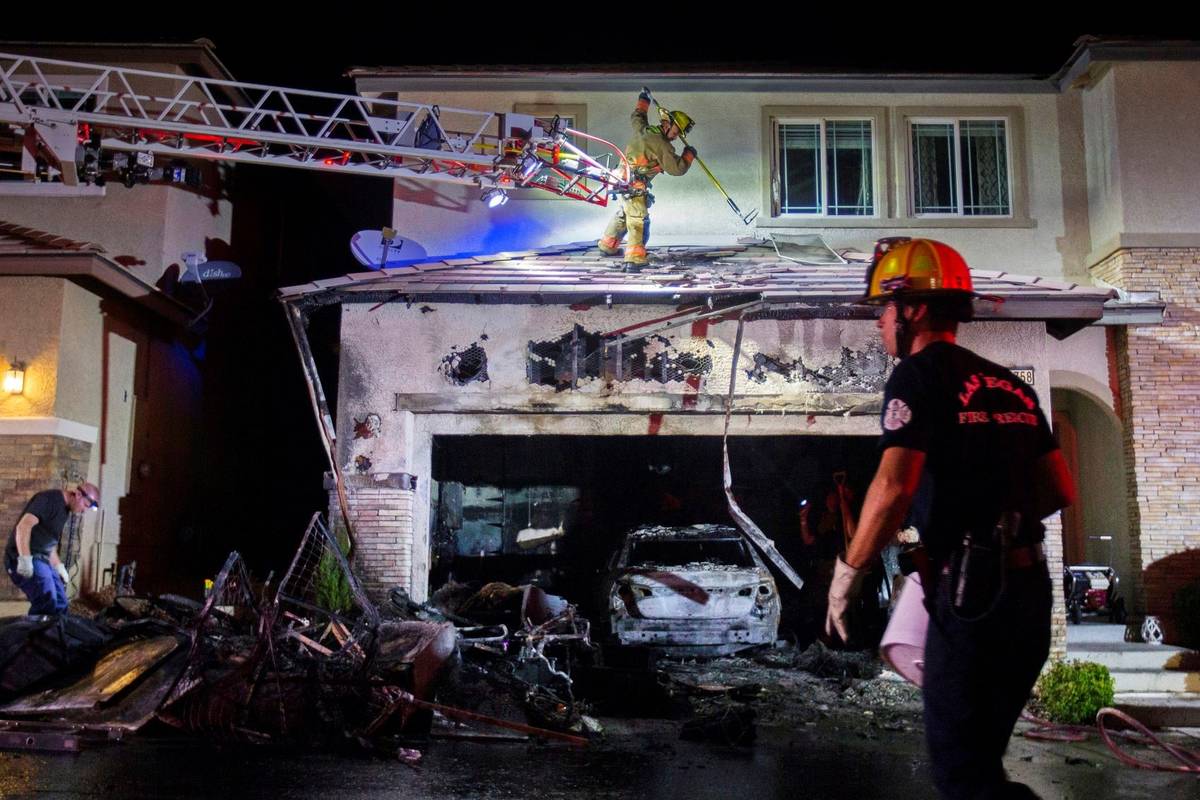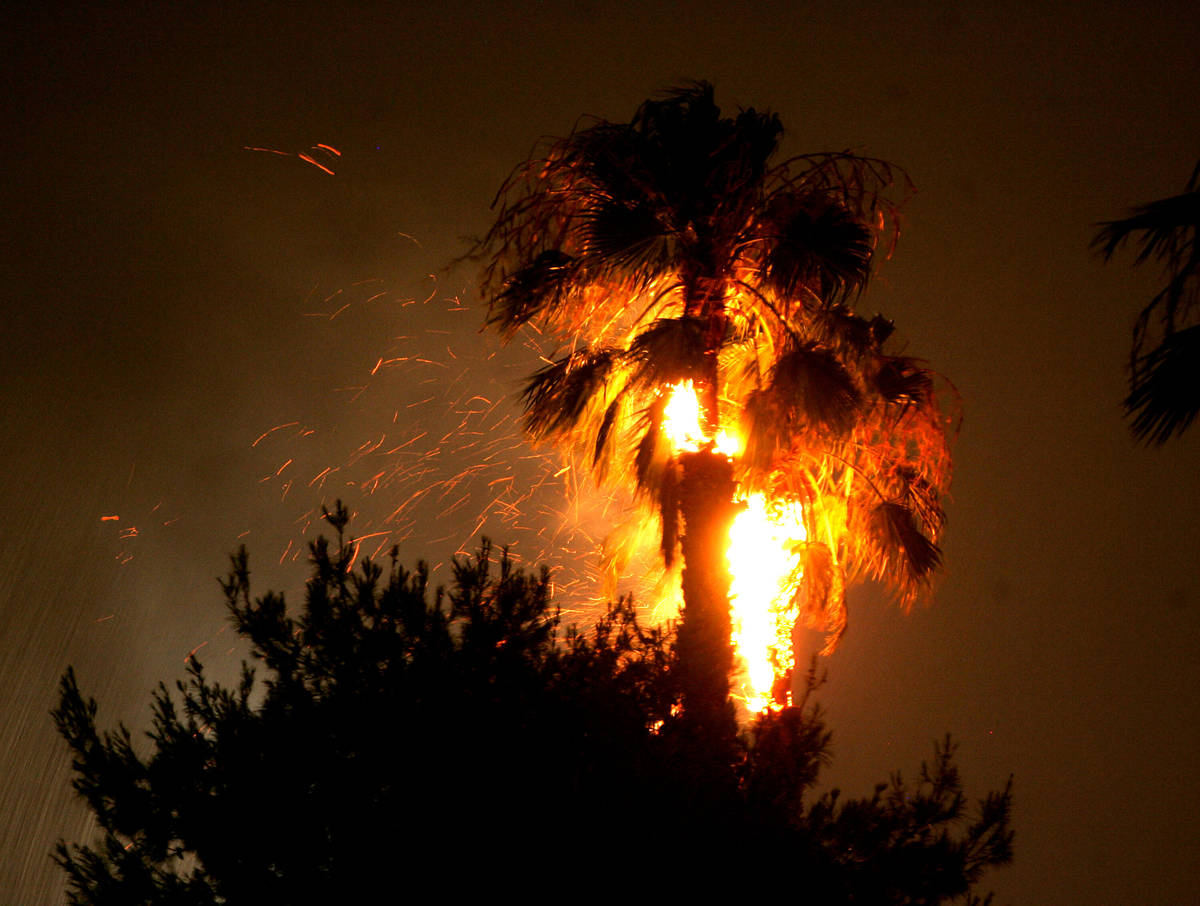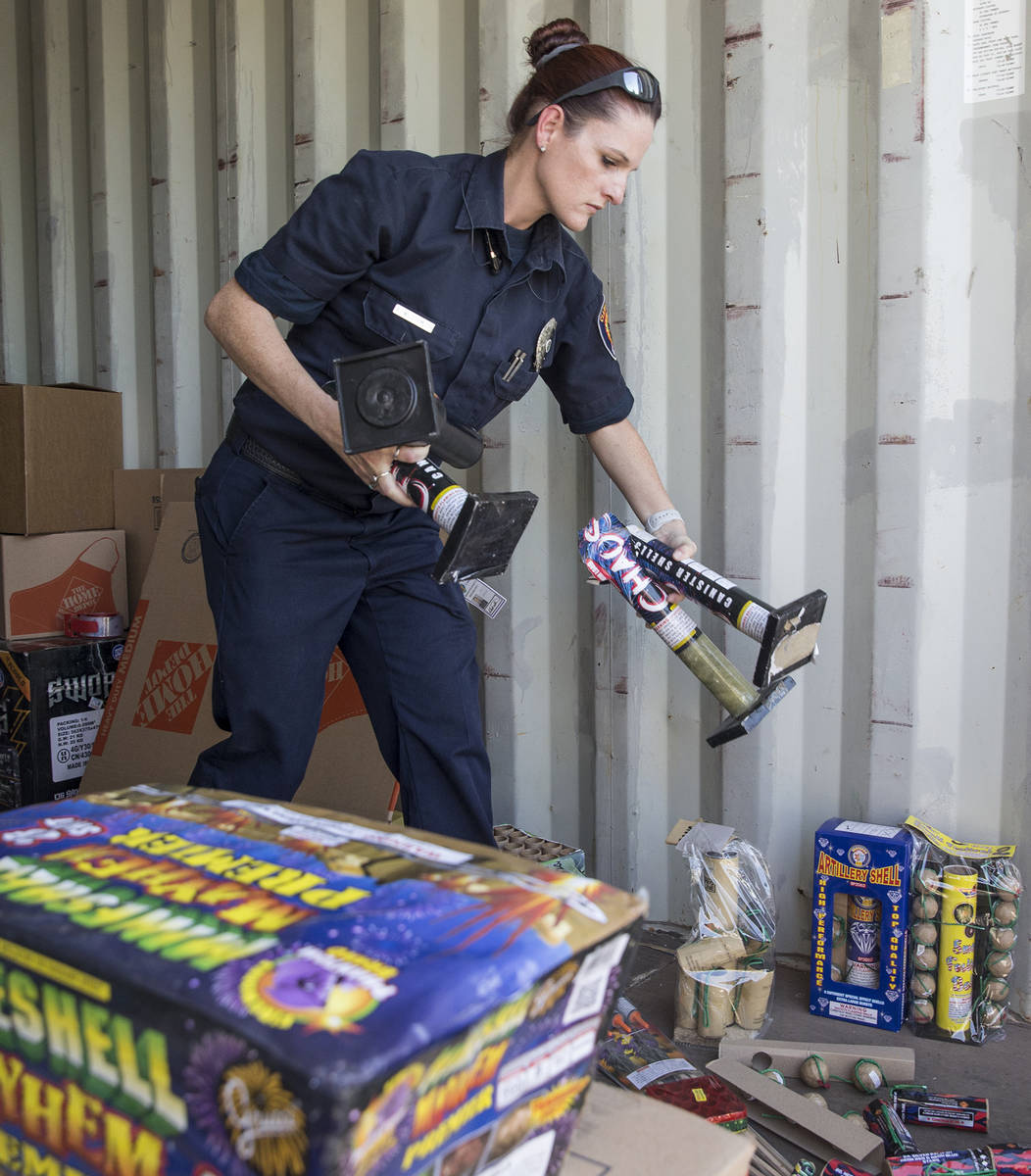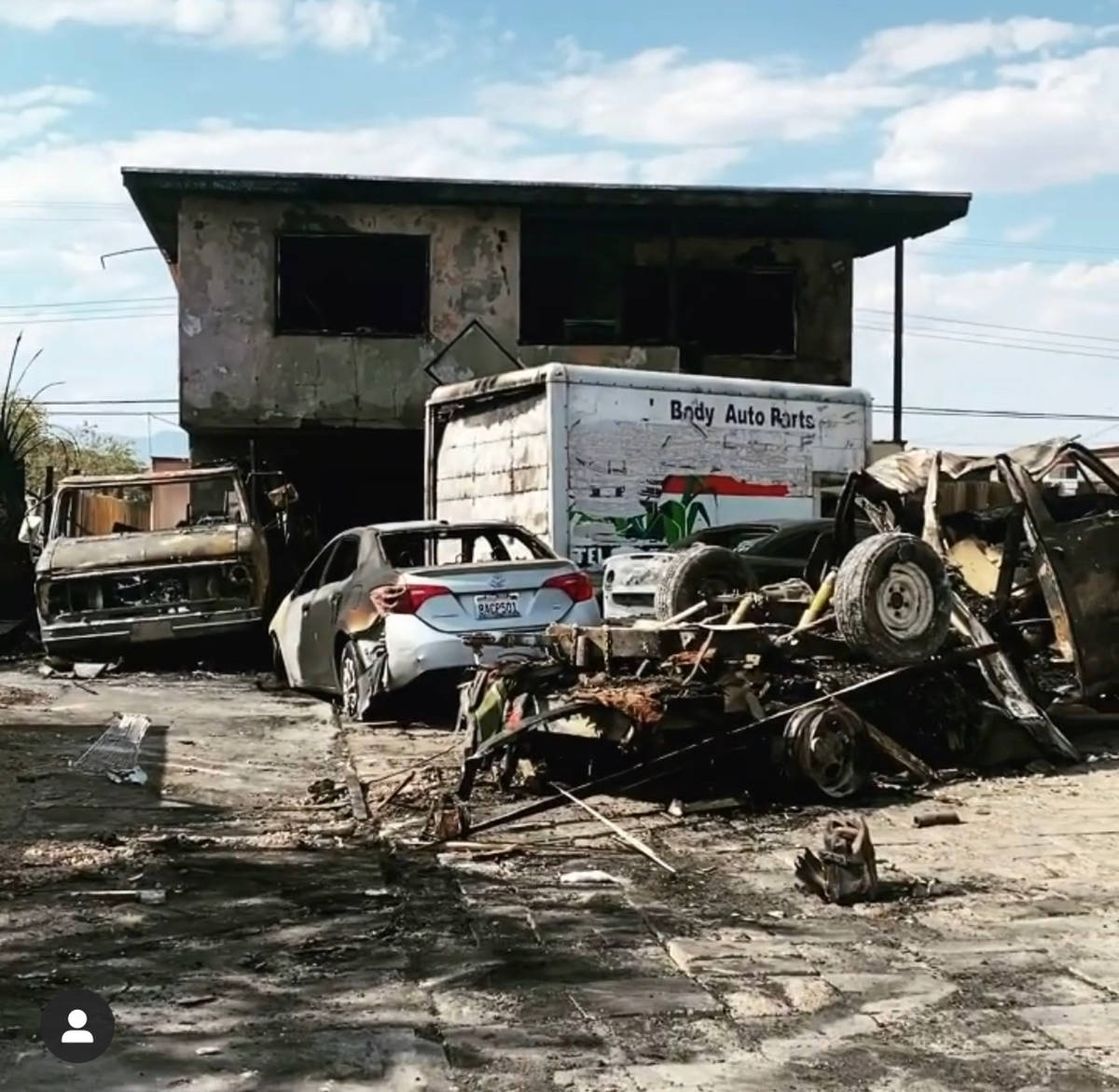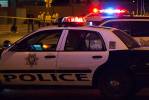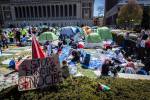Illegal fireworks, extreme drought are fuel for dangerous city fires
Extreme drought. Record heat. Invasive grass and the lack of moisture in desert vegetation. All will factor in how dangerous urban fires will be in the Las Vegas Valley this summer.
Add to that dry brush, dead palm fronds and leaves sitting in gutters in residential areas, we now have fuel for fires — all it takes is a spark.
Fireworks during the long holiday weekend could be a trigger.
Last year, North Las Vegas saw just over a million dollars in damage because of firework-related fires. In the past two weeks, the North Las Vegas Fire Department responded to four significant fires caused by fireworks, totaling $750,000 in damage.
“That number is going to grow pretty quick because we had the incident on Hart street that’s suspected to be fireworks. We’re just waiting for the investigators to update us. In addition to that, we’ve had three people injured and 11 animals killed, all by illegal fireworks. And that doesn’t bode well as we get into the busy week,” firefighter Nino Galloway said.
The brief rain the Las Vegas Valley experienced won’t have enough of an impact to prevent urban fires.
“Even if we get heavy rain for an hour, the ground is so dry and so hard it can’t soak it up fast enough. So it just runs off anyway. You’re not going to solve the drought and the fire problem with a couple of rains,” said John Asselin, spokesperson for the Bureau of Land Management of Southern Nevada.
According to Las Vegas Fire Marshal Robert Nolan, July Fourth is one of the busiest and most stressful nights of the year for law enforcement and fire departments as they respond to calls related to illegal firework activity and urban fires. Las Vegas Fire and Rescue reported nearly 1,400 calls on July 4 last year.
Because Las Vegas lies in the basin of the Mojave Desert climate, the environment is extremely sensitive and susceptible to fires.
The only fireworks allowed for Clark County residents are “safe-and-sane” items sold by licensed nonprofit booths. But Nolan said residents often travel to Pahrump and Moapa, where it’s legal to buy rockets and explosive-type fireworks and then travel back into city limits where those fireworks are illegal.
“Safe-and-sane” fireworks include sparklers and fireworks that keep to a small, circular area on the ground and don’t explode in the air. Illegal fireworks include any item made of highly combustible materials or explode in the air such as firecrackers, Roman candles and skyrockets, according to a news release.
Because most residential areas in the city are not cleared of dry brush and dead palm fronds, there are more chances for rocket and exploding-type fireworks to cause fires.
Because of concerns of extreme drought, some Utah and Arizona communities have canceled shows. Las Vegas plans to host professional firework shows across the valley.
Residential fireworks disposal
Improper use and disposal of fireworks are some of the biggest causes of urban fires. It’s especially risky given the high temperatures associated with fireworks, even with “safe-and-sane”-labeled fireworks.
Take a sparkler, for example. A handheld sparkler on a metal stick can reach temperatures around 2,000 degrees Fahrenheit. That’s as hot as a blow torch or charcoal fire in a grill. Now imagine a piece of firework debris that landed on a dry palm tree after launching several hundred feet into the sky.
Firework debris is larger in surface area than the sparks from a sparkler. Simply doubling the volume of a material that holds heat increases the surface area by a factor of 4 and the thermal energy by 8. In other words, larger-sized firework debris tends to store more heat, which takes longer for it to cool down.
When residents throw away debris or spent fireworks in trash cans, the used pieces are still holding heat. The steady smoldering of spent fireworks in garbage cans leads to firefighters responding to dumpster fires or house fires between 2 to 4 a.m. on July 5, fire officials said.
“Where do most people keep their trash cans? Either in their garage or alongside the house under the eaves of the house. And once that takes off, and it’s in a combustible container like plastic trash cans, now you’ll have a house fire later on,” Nolan said.
With size and smolder, residents need to consider the distance firework debris travels.
Consumer artillery shells are typically 1.75 inches in diameter. When launched, the shells reach an approximate height of 175 feet with a shell burst of about 80 feet wide. In comparison, professional fireworks that are 3 inches in diameter can have a shell burst of about 135 feet wide.
The debris can start a small contained fire, but if it catches on dry grass or gets picked up by the wind and land on roofs and trees, it can quickly turn into an uncontrollable urban fire.
“Unless you have a hardscape with gravel, heat-ignition resistant plants and a well-maintained roof, we’re going to have any number of fires from the illegal explosive devices,” said Tim Szymanski, Las Vegas Fire Department spokesman.
Report illegal fireworks
Fire and police officials are relying on a heat map of the valley showing reported illegal firework activity submitted by residents on ISpyFireworks.com to help mitigate and prevent urban fires. The county urges people not to call 911 or 311, but rather report online on illegal firework activity.
We want people to celebrate but be very cognizant of their surroundings and know that illegal fireworks are illegal. And it puts all of us in danger,” Galloway said. “I’m a firefighter at heart, and at the end of the day, we’re trained for this. We prepare for July Fourth to be a busy weekend, so it’s our job. But the consequences that are felt after the fact affects everybody.”
Stephanie Castillo is a 2021 Mass Media reporting fellow through the American Association for the Advancement of Science. Email her at scastillo@reviewjournal.com or follow her on Twitter @PhutureDoctors.



